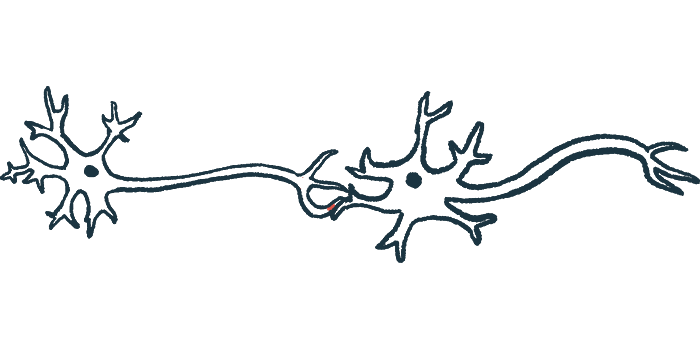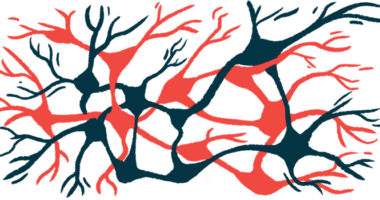In FUS-ALS Cell Model, Circular RNA ‘Trapped’ in Toxic Protein Clumps

Mutations in the FUS gene, which cause some forms of amyotrophic lateral sclerosis (ALS), result in a circular RNA molecule called circ-Hdgfrp3 being pulled into toxic protein clumps that form in nerve cells, according to a study.
This is the first time that a circular RNA has been shown to be involved in the toxic aggregates that characterize ALS, its researchers noted.
The study, “Circ-Hdgfrp3 shuttles along neurites and is trapped in aggregates formed by ALS-associated mutant FUS,” was published in iScience.
FUS gene mutations account for roughly 5% of familial ALS cases, and 1% of sporadic ALS. These disease-causing mutations cause the FUS protein, encoded by the gene, to form toxic clumps in motor neurons (the nerve cells responsible for controlling voluntary movement) that eventually kill these cells.
Circular RNAs, as the name suggests, are RNA molecules that have a specific circular structure in contrast with most linear RNA molecules. First discovered in viruses in the 1970s, circular RNAs have been found to be present across species, but their function in health and disease remains poorly understood.
Scientists in Italy conducted a series of experiments using mouse cells in dishes to examine the role of circ-Hdgfrp3, a circular RNA, in motor neurons carrying an ALS-causing FUS mutation. The researchers chose this specific circular RNA because it is known to be produced at high levels in motor neurons.
They started with imaging experiments to examine where in the neurons circ-Hdgfrp3 was located. The molecule was found in neurons’ cell bodies — the central part of the cell that houses the nucleus — and also in neurites, the projections that nerve cells use to connect with each other and with other cells.
As motor neurons developed and matured over time, the amount of circ-Hdgfrp3 in their neurites tended to increase.
“These results indicate that the establishment of neuronal connections and the increased branching correlate well with the localization of circ-Hgfrp3 in neurites, suggesting a possible role of this molecule at the periphery of MNs [motor neurons],” the researchers wrote.
The scientists then looked at whether the localization of circ-Hgfrp3 differed in neurons carrying the mouse equivalent of a FUS mutation called FUS-P525L. The FUS mutation is known to cause a severe, juvenile form of familial ALS.
Under normal culture (lab dish) conditions, localization of circ-Hgfrp3 was not affected by the FUS mutation. However, differences were seen when the cells were under oxidative stress — a type of cellular stress caused by highly reactive oxygen-containing molecules that can damage DNA and other cell components.
Oxidative stress was found to reduce circ-Hgfrp3 in neurites, both in healthy neurons and in those carrying the FUS mutation.
Furthermore, in cells harboring the FUS mutation, the circular RNA was often present in FUS-containing aggregates.
After the scientists removed the oxidative stress, the amount of circ-Hgfrp3 that re-localized to neurites was markedly higher in healthy neurons than in those with the FUS mutation (64% vs. 51% after 240 minutes).
“These results indicate that mutant FUS exacerbates the effect of oxidative stress in sequestering circ-Hdgfrp3” within toxic aggregates, the researchers wrote.
The finding implies that “long-lasting trapping of circ-Hdgfrp3 inside FUS inclusions in ALS-related conditions might interfere with its trafficking and possibly with its functional activity,” they added, noting a need for further study into the workings of this circular RNA in nerve cells.
Further experiments done using human cells were generally consistent with the results from mouse cells.
“In this study we have defined the features of this circular RNA and described the alterations of its intracellular localization that occur in motor neurons bearing mutations for the FUS protein that are associated to ALS,” Irene Bozzoni, a study co-author with Sapienza University of Rome, said in a press release.







